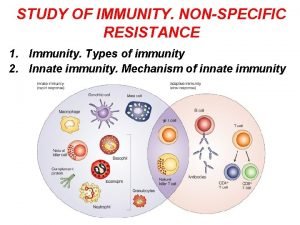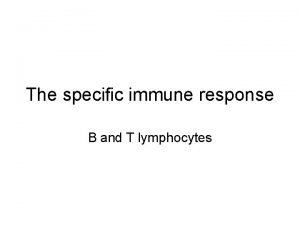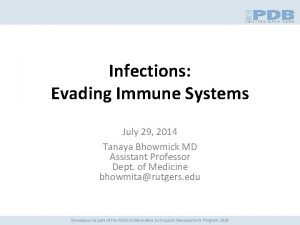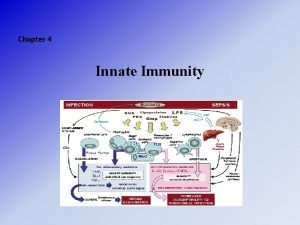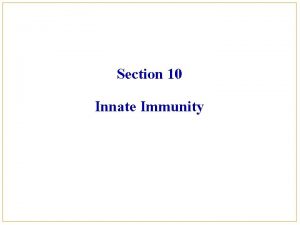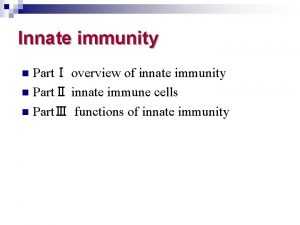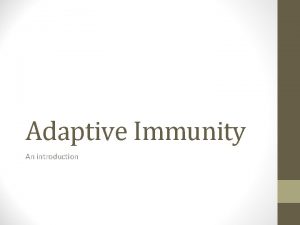Animal Defense Mechanisms Immunity Non Specific Defense Innate









- Slides: 9

Animal Defense Mechanisms… Immunity

Non Specific Defense (Innate Immunity) Protects against microbial attacks - dust - pollen - bacteria

Includes… PHYSICAL BARRIERS - Skin and mucus membranes CHEMICAL BARRIERS - Lysozymes - Gastric acids - Interferons - Complement system *more on these later!

CELLULAR BARRIERS - Macrophages - Neutrophils - Natural Killers cells Also includes the INFLAMMATORY RESPONSE - Histamine release Increased blood flow to area - Attraction of phagocytes - Sometimes a fever

Definitions… Lysozyme: - Enzymes that act to damage/destroy bacterial cell walls Interferons: - Signaling proteins released in response to pathogens - Triggers defense; also called CYTOKINES Complement System: - Enhances ability of antibodies and phagocytes to clear away microbial agents - Part of Innate system BUT can be recruited by the system too! Adaptive

Specific Defense (Adaptive/Acquired Immunity) Protects against specific foreign invaders (antigens or pathogens) There are FOUR ways this can be done: Active - produce antibodies - can be initiated through vaccines

Passive - Antibodies supplied to fetus via placenta or through milk to baby Humoral - Antibodies in blood & lymph that defend against bacteria & viruses Ex. B cells Cell-Mediated - Specialized lymphocytes… will react against viruses & bacteria but also protists, worms, cancerous cells, etc Ex. Helper T cells (Th), Cytotoxic T cells (Tc)


Specificity of Immune Response Already have antibodies in memory produce millions of antibodies very quickly “B” is a different antigen First exposure
 Difference between acquired immunity and innate immunity
Difference between acquired immunity and innate immunity Non specific innate immunity
Non specific innate immunity Innate immunity first line of defense
Innate immunity first line of defense Innate immunity first line of defense
Innate immunity first line of defense Innate immunity first line of defense
Innate immunity first line of defense Innate immunity first line of defense
Innate immunity first line of defense Ciliary escalator
Ciliary escalator Non specific immunity
Non specific immunity Assis prof
Assis prof Innate immunity examples
Innate immunity examples

